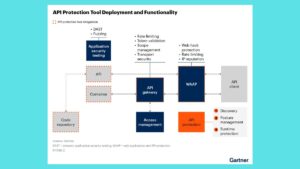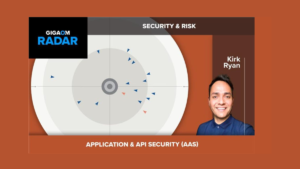Hiring & Onboarding Talent in HR: Best Practices for Success

In today’s competitive business landscape, hiring and onboarding the right talent is crucial for any organization’s success. The process of attracting, selecting, and integrating new employees has evolved significantly, and HR professionals play a pivotal role in ensuring this process is efficient, effective, and aligned with the company’s goals. In this blog, we will explore best practices for hiring and onboarding talent, emphasizing the importance of creating a seamless experience for both candidates and new hires.
The Importance of Effective Hiring
Hiring the right talent is one of the most significant challenges faced by HR professionals. A successful hire can lead to increased productivity, better team dynamics, and a positive company culture, while a poor hire can result in decreased morale, wasted resources, and turnover costs.
Here are some key reasons why effective hiring is essential:
- Cultural Fit: Finding candidates who align with the company’s values and culture is crucial for long-term success. Employees who resonate with the organizational culture are more likely to stay engaged and contribute positively.
- Skill Alignment: Assessing candidates for the specific skills needed for the role ensures that they can perform their tasks effectively and contribute to the team’s success from day one.
- Retention Rates: A well-structured hiring process increases the likelihood of retaining talent. When candidates feel valued and engaged during the hiring process, they are more likely to accept offers and remain with the company.
Best Practices for Hiring Talent
- Define Clear Job Descriptions
Start by creating clear and detailed job descriptions that outline the roles, responsibilities, and qualifications required for the position. Include information about the company culture and values to attract candidates who align with your organization’s ethos.
- Utilize Technology and AI
Leverage technology and AI tools to streamline the hiring process. Applicant Tracking Systems (ATS) can help manage resumes, screen candidates based on keywords, and facilitate communication throughout the hiring process.
- Implement Structured Interviews
Structured interviews involve asking all candidates the same set of predetermined questions, ensuring consistency and reducing bias. This approach helps in evaluating candidates more objectively and allows for better comparisons between applicants.
- Assess Soft Skills
While technical skills are essential, soft skills such as communication, teamwork, and adaptability are equally important. Incorporate assessments or situational questions that gauge these attributes during the interview process.
- Involve Team Members in the Hiring Process
Engage current team members in the hiring process to provide diverse perspectives and insights. This collaborative approach not only helps in finding the right fit but also fosters a sense of ownership among team members.
- Enhance Employer Branding
Develop a strong employer brand that showcases your company culture, values, and benefits. Utilize social media and online platforms to share employee testimonials, behind-the-scenes glimpses, and organizational achievements to attract top talent.
The Onboarding Process
Once you’ve hired the right talent, the next critical step is onboarding. An effective onboarding process ensures that new hires feel welcomed, informed, and prepared to succeed in their new roles.
Best Practices for Onboarding Talent
- Create a Structured Onboarding Plan
Develop a comprehensive onboarding plan that outlines the timeline, objectives, and activities for new hires. This plan should include training schedules, introductions to team members, and essential resources to help them acclimate to the organization.
- Foster a Welcoming Environment
Make new hires feel welcomed from day one. Assign a mentor or buddy who can guide them through the onboarding process, answer questions, and help them build relationships within the team.
- Provide Necessary Resources
Ensure that new hires have access to the tools, technology, and resources they need to perform their jobs effectively. This includes providing login credentials, access to software, and any required training materials.
- Set Clear Expectations
Clearly communicate performance expectations, goals, and key performance indicators (KPIs) during the onboarding process. This clarity helps new hires understand their roles and how their contributions align with organizational objectives.
- Gather Feedback
Solicit feedback from new hires about their onboarding experience. This feedback is invaluable for identifying areas of improvement and ensuring that the onboarding process remains effective and engaging.
- Encourage Ongoing Development
Onboarding should not end after the first week or month. Encourage continuous learning and development by providing opportunities for training, mentorship, and career growth. This investment in employee development fosters loyalty and enhances job satisfaction.
The Impact of Effective Hiring and Onboarding
When organizations invest time and resources into effective hiring and onboarding, the benefits are profound:
- Increased Employee Engagement: Employees who feel welcomed and supported during onboarding are more likely to be engaged and productive in their roles.
- Improved Retention Rates: A positive onboarding experience can significantly reduce turnover rates, saving the organization time and money associated with recruitment and training.
- Enhanced Company Culture: A seamless hiring and onboarding process reinforces company culture and values, creating a cohesive and motivated workforce.
- Greater Team Performance: Well-integrated new hires can contribute to higher team performance, leading to improved outcomes and organizational success.
Conclusion
In today’s fast-paced business environment, effective hiring and onboarding practices are more important than ever. By defining clear job descriptions, utilizing technology, and creating structured onboarding plans, HR professionals can attract and retain top talent that aligns with the organization’s goals and culture.
Investing in these processes not only enhances employee satisfaction but also drives organizational success. As businesses continue to evolve, prioritizing hiring and onboarding talent will be key to building a strong, resilient workforce ready to meet future challenges.
By focusing on these best practices, HR professionals can create a hiring and onboarding experience that sets the stage for long-term success, benefiting both employees and the organization as a whole.





